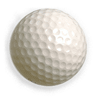 |
Golf Stance and Swing Improvements Using Heel Lifts or Shoe Lifts |
 |
Golf Stance and Swing Improvements Using Heel Lifts or Shoe Lifts |
| Golfers can benefit from recent research, which
shows that an easy method of learning and maintaining the "forward balance"
required for combining distance with control is to insert a wedge or heel lift in the golf
shoe. This changes the stance, and moves the golfers center of balance forward onto the ball of the foot, rather
than back toward the heel, and the result is a more powerful and controlled
swing, resulting in better accuracy and increased distance.
Based on peer-reviewed research, the result of placing heel lifts in the golf shoes of amateur golfers is dramatic: the average golfer studied added 44 yards to their drives with a 1-wood, and 4 yards to their 5-iron shots! Golfers studied were also more accurate with heel lifts in their golf shoes: an average of 8 yards closer to the centerline to the pin along with the increased distance for the drive. This research is documented in a research paper presented at the Fifth International Symposium on Footwear Biomechanics, in 2001. Another study reported in the Journal of Physiological and Manipulative Therapy indicated that the use of orthotics could increase club-head velocity by enough to add 15 yards distance to the drives of golf pros. This may be a result of the heel elevation that is part of nearly all orthotics. Anecdotal evidence supports these results: a South Carolina golf Pro, Arthur Much, stated that using heel lifts in his golf shoes "...cut six strokes from my score..." and the results of removing and replacing the heel lift were reproducible for him - lower scores with the heel lift, higher scores without. Most golf shoes today have a removable and replaceable insole or footbed, which allows golfers to take advantage of the use of heel lifts without permanent modification of the shoes. Placing a firm heel lift beneath the insole allows a golfer to experiment with the height required for best shoe comfort and swing. While the biomechanical studies used the same height shoe inserts in both shoes, it is also possible to use differing height lifts to correct for specific issues. For example, it is common for a golfer to develop a habit of "falling off" the ball during the drive, and correcting this requires that the golfer's center of weight be more forward on the trailing foot (the right foot for right-handed golfers). This shift in balance can be achieved by using slightly more height under the trailing foot. Adjustable height heel lifts are ideal for this purpose. The use of heel lifts in golf shoes seems to be a powerful training aid for the golf stance and swing, whether used in one or both golf shoes. Suggestions on Choosing Heel Lifts for Golf
|
This information is presented as a summary of research reported on the Internet. ©2003